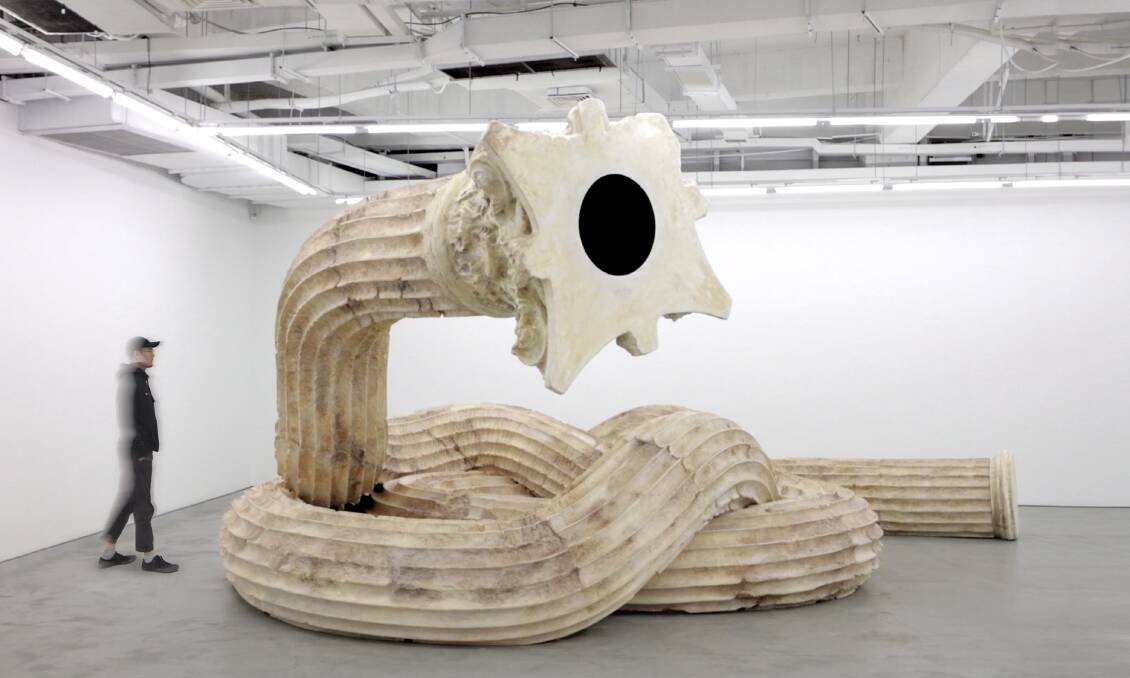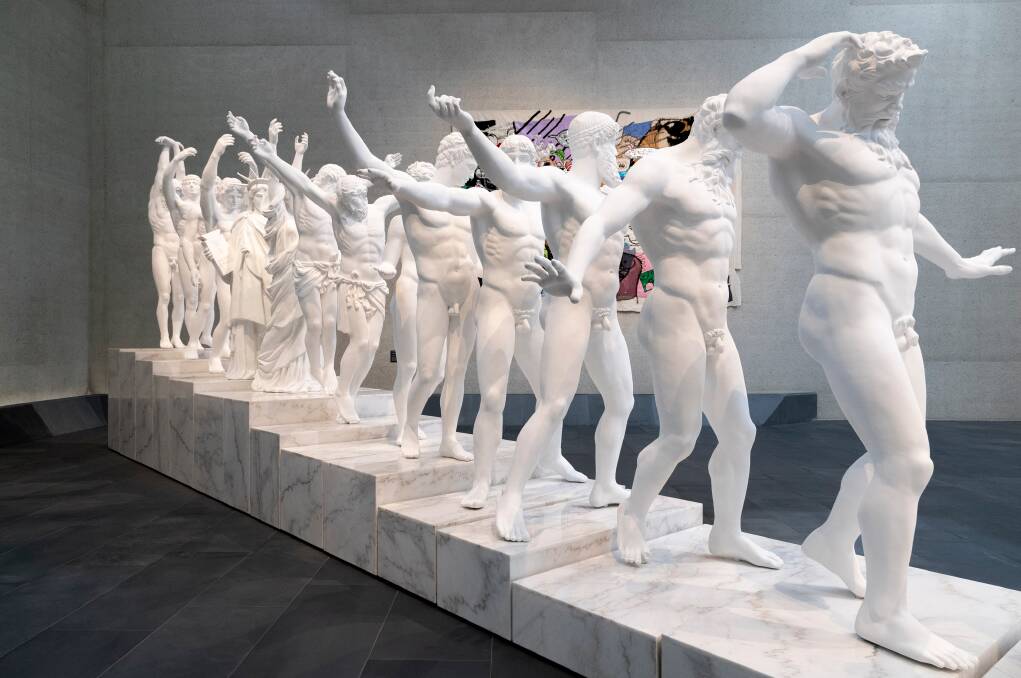
Xu Zhen: Eternity vs. Evolution. National Gallery of Australia. Until March 14, 2021. Advance bookings required. nga.gov.au.
Subscribe now for unlimited access.
or signup to continue reading
Several years ago, I was teaching in Beijing a course in art history during their winter period and attended one of the most memorable exhibition openings in my life. It was Xu Zhen: A MadeIn Company Production, a mid-career retrospective exhibition at the UCCA Center for Contemporary Art. The show included more than 50 installation pieces, 10 videos, 40 painting and collage works and several performances and filled UCCA's signature Great Hall.
As if the exhibition was not overwhelming enough in its own right, as the opening night moved to a climax, the invited dignitaries were descended upon by a large group of white-clad people described as inmates from a lunatic asylum who had recently escaped and who decided to physically attack the assembled throng. Although conscious that we had unwittingly become part of Xu Zhen's latest performance piece, many of the guests were forced to defend themselves and others fled for cover.
Xu Zhen is a mercurial character in the Chinese art scene - irreverent and with a voracious appetite for consuming new media and working across art forms. The Beijing exhibition, curated by the brilliant director of UCCA, Philip Tinari, included a mock supermarket, huge installations, videos and mass-produced items made under the moniker MadeIn Company created by the artist to trade in "Xu Zhen" brand products.
Xu Zhen's art has become a global phenomenon and has swept the world art scene and his 14-metre-long Eternity: Buddha in Nirvana dominated the last National Gallery of Victoria Triennial in 2017-18. Here Xu Zhen replicated a famous Buddhist statue together with Greco-Roman, renaissance and neoclassical figures.
The exhibition at the National Gallery of Australia brings together as its highlight two major pieces, Xu Zhen's well-known monumental sculpture European Thousand-Armed Classical Sculpture of 2014 and a playful piece Hello, 2018-19 that I have not seen before. There is also a heaving pile of rubble, an East-West commentary on the Elgin Marbles, a highly textured painting that appears like icing on a cake, some videos and a tapestry. The work is drawn from Judith Neilson's White Rabbit Contemporary Chinese Art Collection in Sydney.

Xu Zhen likes to appear in the role of the prankster and trickster who wittingly plays with our assumptions about art and culture. The Parthenon sculptures, the paragon of classical taste, are dive bombed by monuments revered in Buddhism. The assembly of 19 classical sculptures from Zeus to Jesus Christ and the Statue of Liberty are absurd and when viewed from the front may hint at the Buddhist Thousand-Armed Avalokiteshvara. Nothing is what it seems and what appears as self-evident at first sight may be very different when seen from a different point of view.
Hello is the most intriguing of the pieces at the exhibition. While audiences have long been aware of eyes that follow you around the room from a painted portrait, here a whole flexible bending Corinthian column seems to follow your every movement and peers at you from the gaping hole at its summit. Xu Zhen draws the viewer's attention to Friedrich Nietzsche's well-known aphorism, "He who fights with monsters should look to it that he himself does not become a monster. And if you gaze long into an abyss, the abyss also gazes into you."
In China this aphorism is popularly cited as something to do with state surveillance and how custodians who set out to protect us from monsters can themselves become monsters.
Although our public art galleries are still operating under strict COVID restrictions and on the day I visited the show, the National Gallery was as quiet as a morgue on an off day, Xu Zhen's games with eternity and evolution are well worth a visit.

